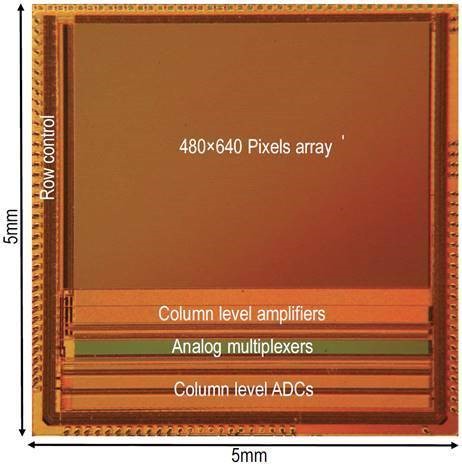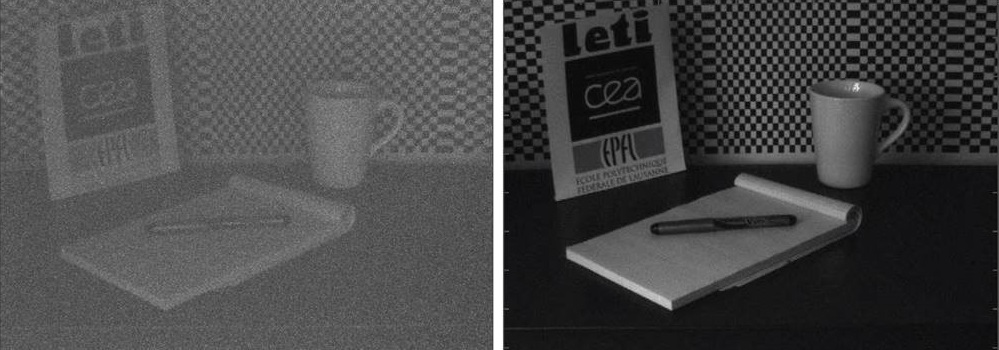
Chip micrograph of the realized VGA CMOS image sensor.

Background
The continuous improvements of CMOS image sensors (CIS) in terms of quantum efficiency, speed, and resolution brought this low-cost device into high-performance applications, replacing progressively the charge coupled devices (CCDs). Photoelectron counting capability is the next step for CIS for ultimate low-light performance and new imaging paradigms. With recent improvements of CIS sensitivity, the sub-electron read-noise limit has been reached. But this low-noise level is still a bottleneck, and further reduction towards deep sub-electron noise is required.
Objective
In the Ultra-Low-Noise CMOS Image Sensors project, we aim at demonstrating that a detailed analytical noise calculation of the read noise (thermal noise, 1/f noise, RTS noise and leakage-current shot noise) allows a noise reduction to deep subelectron levels, enabling photoelectron counting by using exclusively design optimization in standard technology without any process refinements.
Recent publications